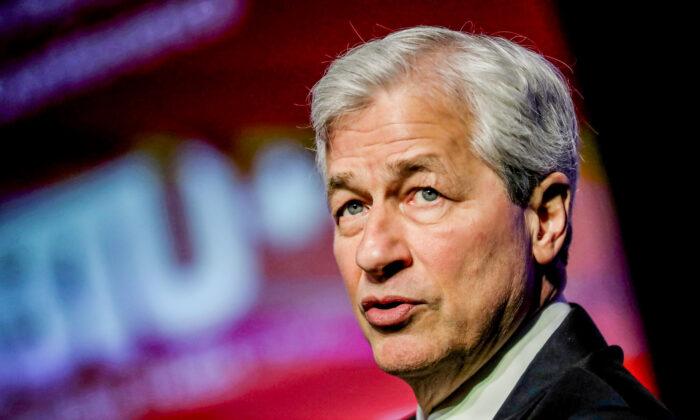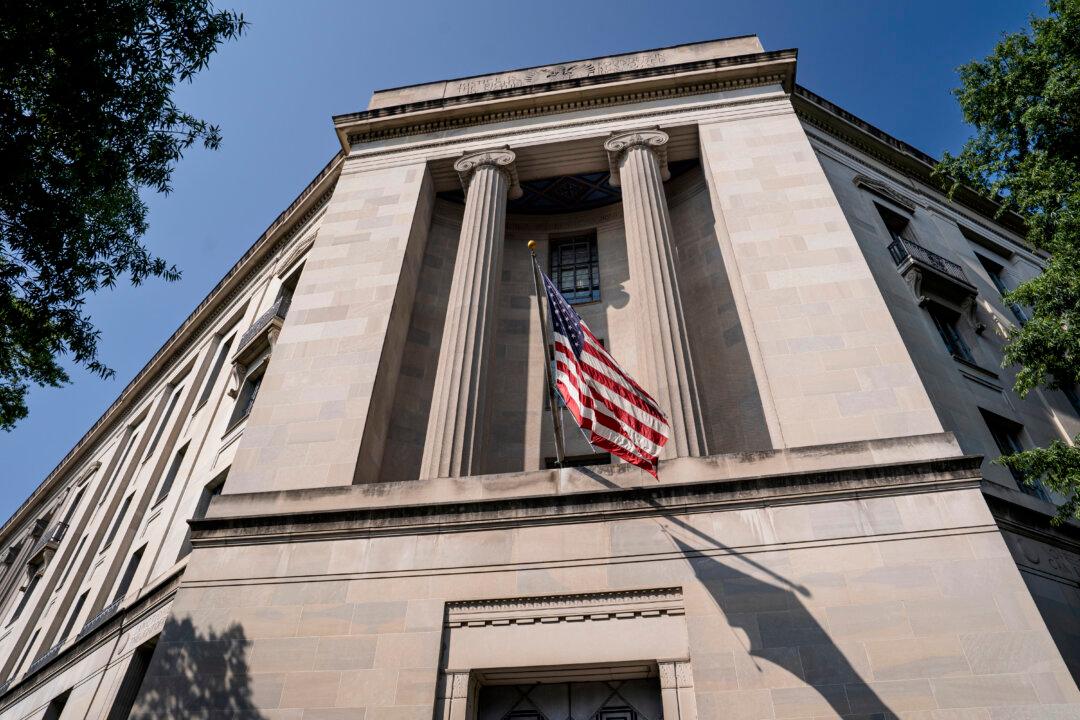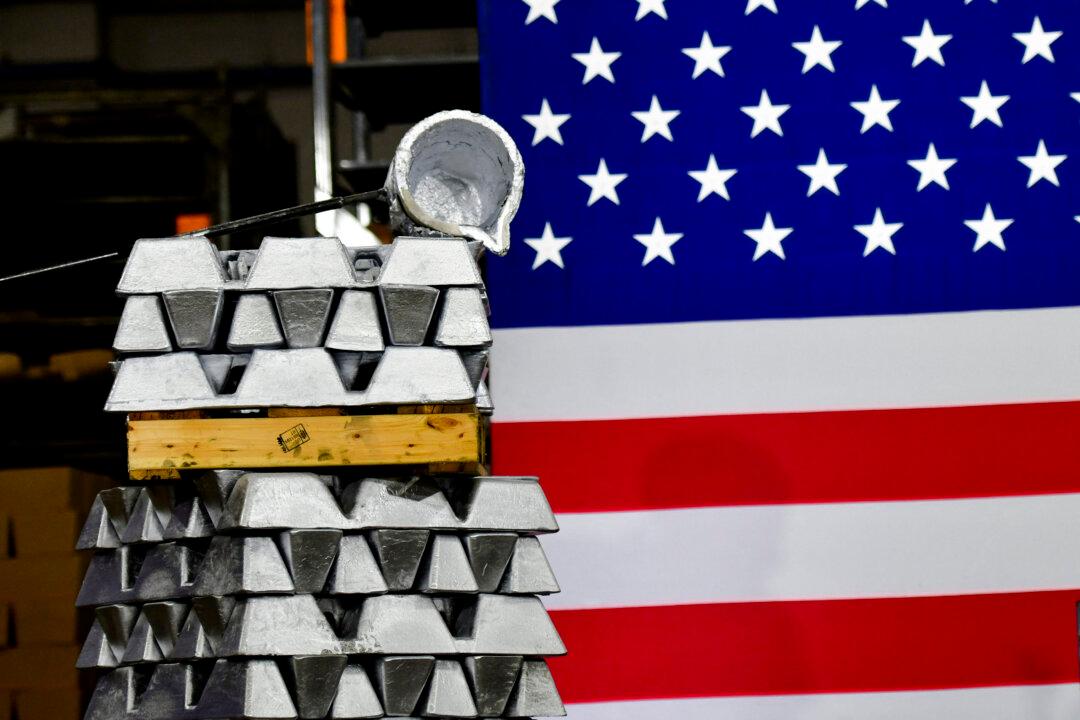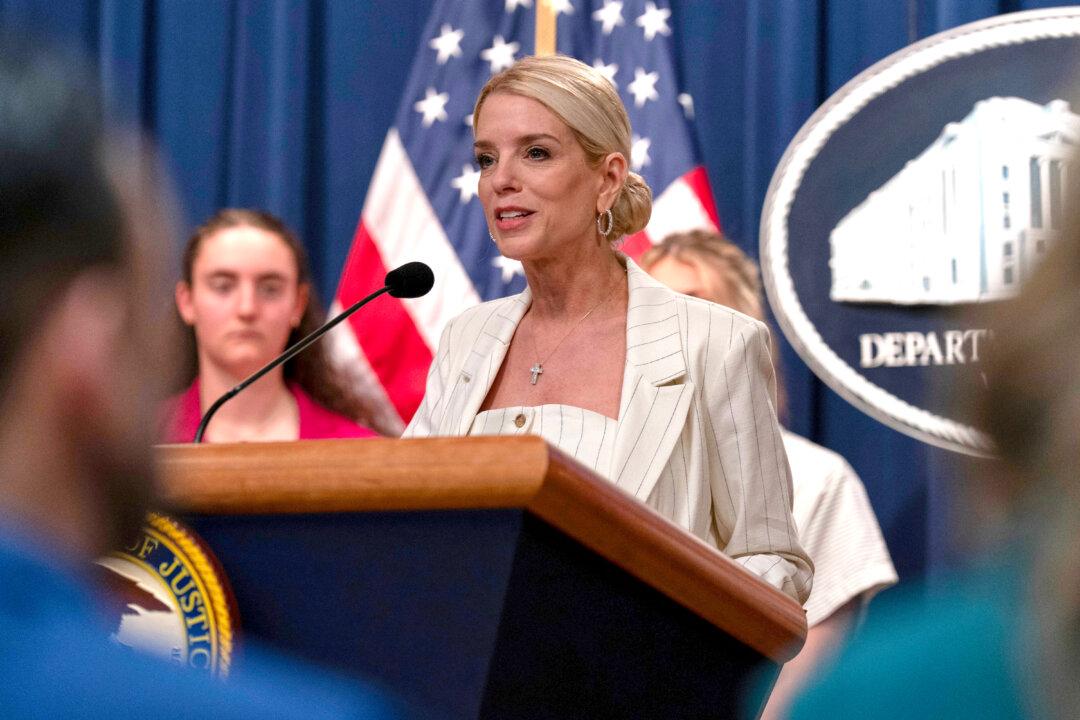JPMorgan Chase CEO Jamie Dimon said that out-of-control spending in Washington that keeps adding to the growing pile of U.S. government debt threatens to trigger a reckoning in the form of a market “rebellion.”
Mr. Dimon made the remarks while speaking on a panel at the Bipartisan Policy Center in Washington last week alongside former House Speaker Paul Ryan (R-Wis.), a self-proclaimed deficit hawk.
At one point in the discussion, Mr. Ryan said that the “most predictable crisis we’ve ever had” is the looming debt spiral as the U.S. government faces increasing levels of indebtedness, threatening America’s ability to pay it back—and risking a default.
Mr. Dimon, who agreed with Mr. Ryan’s take, was asked what it means for the U.S. economy if the federal government fails to tackle the issue of massive government spending.
He recalled that in the early 1980s, the debt was around 35 percent of gross domestic product (GDP). Today, the debt-to-GDP ratio is above 100 percent, and Mr. Dimon said it’s projected to reach 130 percent by 2035.
‘There Will Be a Rebellion’
While the United States has not yet suffered the “hockey stick” surge, Mr. Dimon warned that “when it starts, markets around the world—by the way, because foreigners own $7 trillion of U.S. government debt—there will be a rebellion.”The bank chief added that a “rebellion”-type reckoning—which could involve a sudden deepening of the debt crisis as investors lose confidence in the government’s ability to service its debts and sell off U.S. Treasurys—would be “the worst possible way to do it.”
The point at which America’s public debt becomes unsustainable is fast approaching, Mr. Dimon warned.
“It is a cliff. We see the cliff. It’s about 10 years out. We’re going 60 miles an hour,” he said.

“Unlike technical defaults where payments are merely delayed, this default would be much larger and would reverberate across the U.S. and world economies,” they explained.
Under a “best case” scenario, the University of Pennsylvania analysts estimate that the United States has around 20 years to take corrective action before the growing debt spiral spins out of control.
However, a “worst case” scenario is possible, too. This would be prompted in part by forward-looking markets losing confidence in the U.S. government and demanding an even higher return on U.S. government securities if they see debt increasing well into the future.
The higher borrowing rates that would ensue would, in turn, make the debt snowball or grow even faster. The analysts warn that, under a worst-case scenario, the U.S. debt-to-GDP ratio could rocket to 204 percent by 2040.
Debt ‘Death Spiral’
Echoing Mr. Dimon’s warning of a fast-approaching reckoning for America’s ballooning public debt, author Nassim Taleb said he sees the United States heading for a debt “death spiral.”Unless politicians in Washington rein in spending, debt troubles will snowball, warned the author of the bestselling book “The Black Swan,” which deals with the extreme impact of rare events.

Mr. Taleb, who correctly predicted the 2008 financial crash, issued his latest warning on Jan. 29 while speaking at an event for Universa Investments, the hedge fund he advises.
“So long as you have Congress keep extending the debt limit and doing deals because they’re afraid of the consequences of doing the right thing, that’s the political structure of the political system, eventually you’re going to have a debt spiral,” Mr. Taleb said at the event.
“And a debt spiral is like a death spiral,” he added ominously. While he didn’t elaborate on how he thinks this could play out, he expressed pessimism that politicians would smarten up.
“We need something to come in from the outside, or maybe some kind of miracle,” he added.
This is “truly a depressing ‘achievement,’” said Maya MacGuineas, president of the Committee for a Responsible Federal Budget (CRFB).
“There is not a single economic reason to add to the debt at the rate we are, but sadly, our political leaders are unwilling to make the changes we need to turn the fiscal situation around.”







